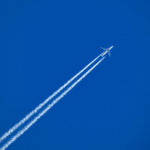The International Air Transport Association (IATA) has urged governments to work closely with the aviation industry to ensure a smooth transition to new 5G services without disruption to aircraft operations.
IATA said that while it recognised the economic importance of next generation commercial wireless telecommunications, maintaining current levels of safety of passengers, flight crews and aircraft should be a priority.
US issues
“We must not repeat the recent experience in the United States, where the rollout of C-band spectrum 5G services created enormous disruption to aviation, owing to the potential risk of interference with radio altimeters that are critical to aircraft landing and safety systems. In fact, many countries have successfully managed to facilitate the requirements of 5G service providers, while including necessary mitigations to preserve aviation safety and uninterrupted services. These include, for example, Brazil, Canada, France and Thailand,” said Willie Walsh, IATA’s Director General, in Doha, where the 78th IATA Annual General Meeting was being held.
Before deciding on any spectrum allocations or conducting spectrum auctions, IATA has called for governments to ensure close coordination and mutual understandings between national spectrum and aviation safety regulators so that each frequency allocation is comprehensively studied and is proven not to adversely impact aviation safety and efficiency.
Thorough testing
Measures that have already been used by some governments include:
- Ensure thorough testing, sufficient spectrum separation between 5G C-band deployments and 4.2-4.4 GHz frequency band used by existing radio altimeters
- Clearly codify and enforce the maximum power limit for 5G C-band transmission and downward tilting of 5G antennae particularly in the vicinity of flightpaths
- Establishment of sufficient 5G C-band prohibition and precautionary zones around airports
IATA noted that airlines operating to, from and within the US continue to contend with the effects of the rollout of 5G.
Retrofit and upgrade radio altimeters
This includes a pending airworthiness directive from the Federal Aviation Administration requiring them to retrofit and upgrade radio altimeters at their own expense to enable the respective aircraft to continue to use CAT II and CAT III low-visibility approaches at many US airports where 5G C-Band service is currently or will be deployed in future.
IATA said the timely availability of upgraded altimeters was a “concern”, as was the cost of these investments and the lack of certainty regarding the future spectrum environment.
“FAA’s unilateral decision to require airlines to replace or upgrade their existing radio altimeters – which are approved by both the FAA and the US Federal Communications Commission – by July 2023 is deeply disappointing and unrealistic,” said Walsh.
Lacking confidence?
“The FAA has not even approved or certified all the safety solutions that it will require, nor have systems providers been able to say with certainty when the equipment will be available for much of the fleet. So how can there be any confidence in the timeline?
“Furthermore, FAA can provide no guarantee that airlines will not have to carry out further upgrades to radio altimeters as even more powerful 5G networks are deployed in the near future. Safety is our highest priority, but it cannot be achieved with this rushed approach. The FAA needs to continue working with all stakeholders collaboratively and transparently, including the FCC and the telecom sector, to define solutions and deadlines that reflect reality.”

